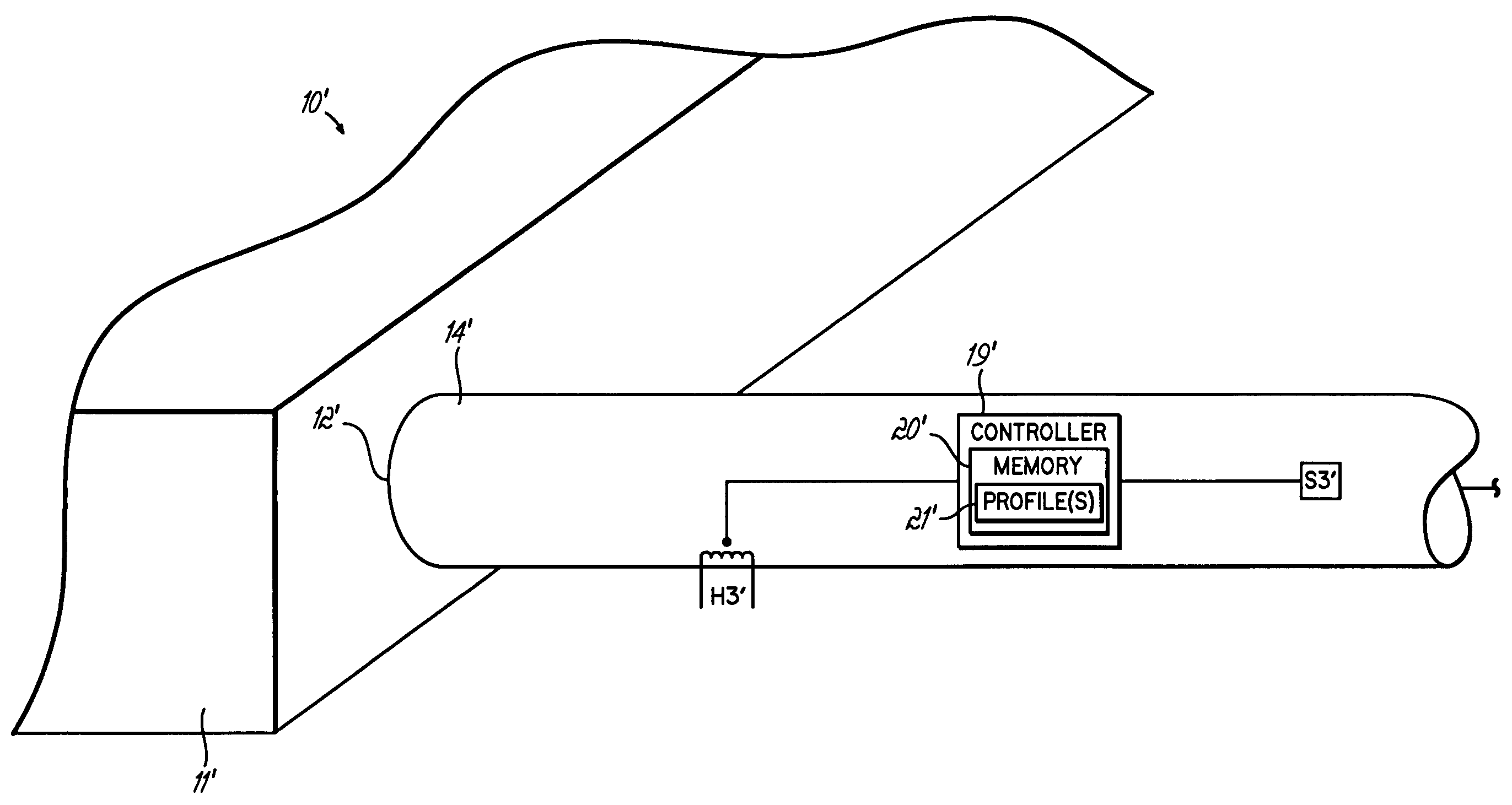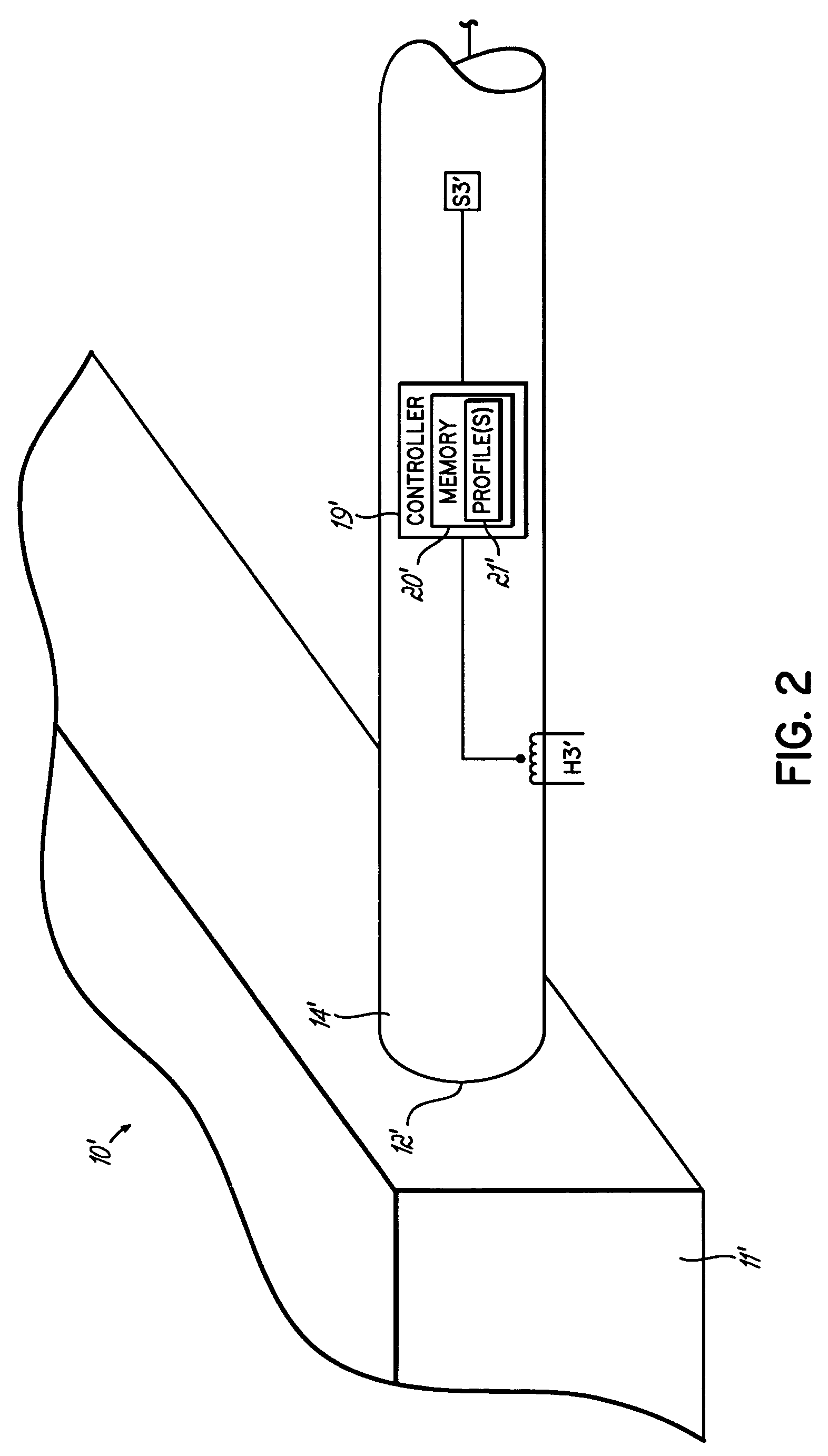Inferential temperature control system
a temperature control system and temperature control technology, applied in the direction of liquid transfer devices, semiconductor/solid-state device testing/measurement, instruments, etc., can solve the problems of system shutdown, product waste, product and/or equipment waste, etc., to achieve the effect of reducing production costs, reducing production costs, and reducing production efficiency
- Summary
- Abstract
- Description
- Claims
- Application Information
AI Technical Summary
Benefits of technology
Problems solved by technology
Method used
Image
Examples
Embodiment Construction
[0016]FIG. 1 illustrates a hot melt heating and dispensing system 10 configured to implement a default heating cycle in response to a detected component failure. More particularly as shown in FIG. 1, the system 10 includes a tank, or reservoir 11. The reservoir 11 is fluidly coupled to a manifold 12 for distributing the liquefied thermoplastic material such as a hot melt adhesive. One or more heated hoses 14a-c may be attached to the manifold and to a respective dispenser 16a-c.
[0017]The reservoir 11 is provided with a schematically depicted heater, or heater H1. Associated with the reservoir 11 is temperature sensor S1, also shown schematically. As with other heaters described herein, heater H1 may be configured such that it is incapable of causing the liquid to exceed the flashpoint temperature of heated adhesive, should for instance, a switch or contact associated with the heater H1 become locked and incapable of turning off the heater.
[0018]The manifold 12 has several output po...
PUM
 Login to View More
Login to View More Abstract
Description
Claims
Application Information
 Login to View More
Login to View More - R&D
- Intellectual Property
- Life Sciences
- Materials
- Tech Scout
- Unparalleled Data Quality
- Higher Quality Content
- 60% Fewer Hallucinations
Browse by: Latest US Patents, China's latest patents, Technical Efficacy Thesaurus, Application Domain, Technology Topic, Popular Technical Reports.
© 2025 PatSnap. All rights reserved.Legal|Privacy policy|Modern Slavery Act Transparency Statement|Sitemap|About US| Contact US: help@patsnap.com



